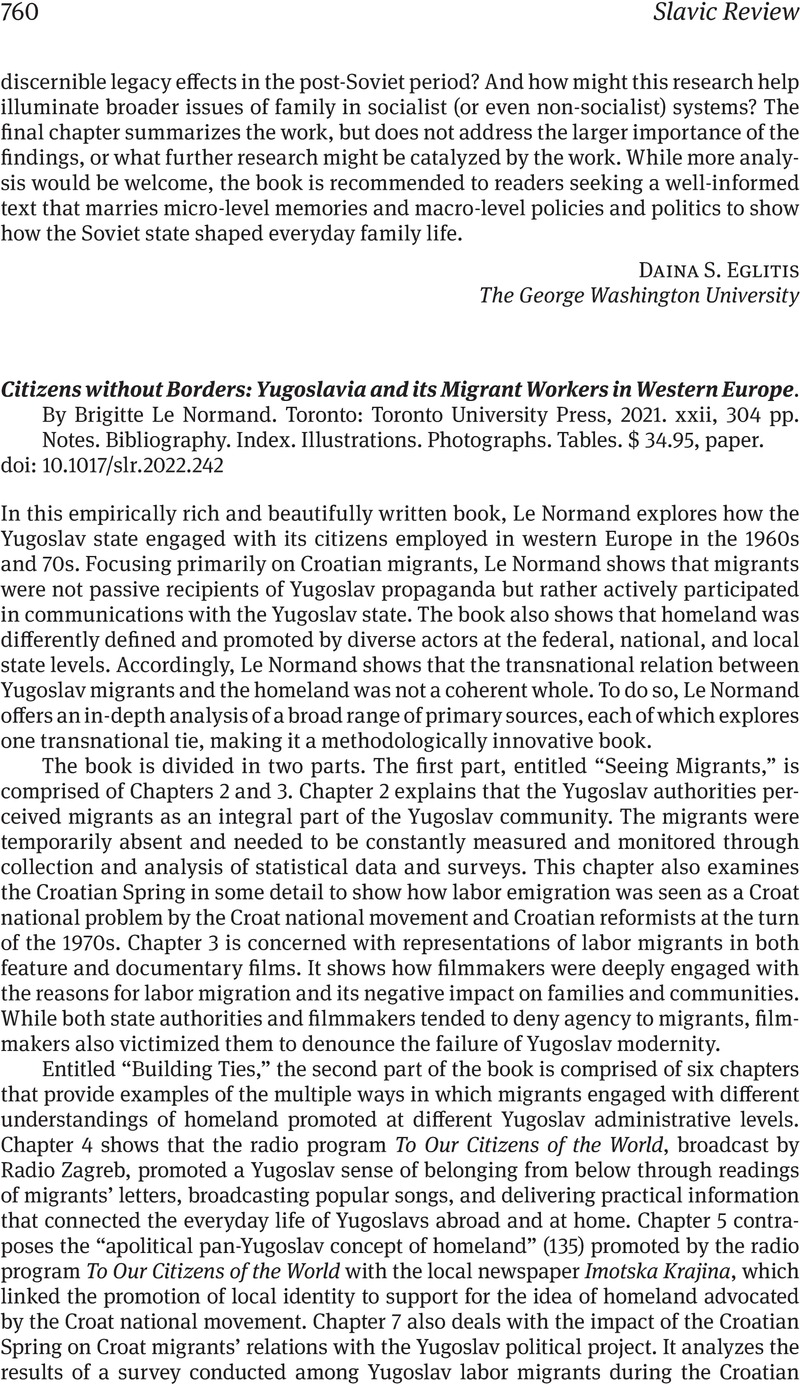No CrossRef data available.
Article contents
Citizens without Borders: Yugoslavia and its Migrant Workers in Western Europe. By Brigitte Le Normand. Toronto: Toronto University Press, 2021. xxii, 304 pp. Notes. Bibliography. Index. Illustrations. Photographs. Tables. $ 34.95, paper.
Review products
Citizens without Borders: Yugoslavia and its Migrant Workers in Western Europe. By Brigitte Le Normand. Toronto: Toronto University Press, 2021. xxii, 304 pp. Notes. Bibliography. Index. Illustrations. Photographs. Tables. $ 34.95, paper.
Published online by Cambridge University Press: 07 February 2023
Abstract
An abstract is not available for this content so a preview has been provided. Please use the Get access link above for information on how to access this content.

- Type
- Book Review
- Information
- Copyright
- Copyright © The Author(s), 2023. Published by Cambridge University Press on behalf of the Association for Slavic, East European, and Eurasian Studies


